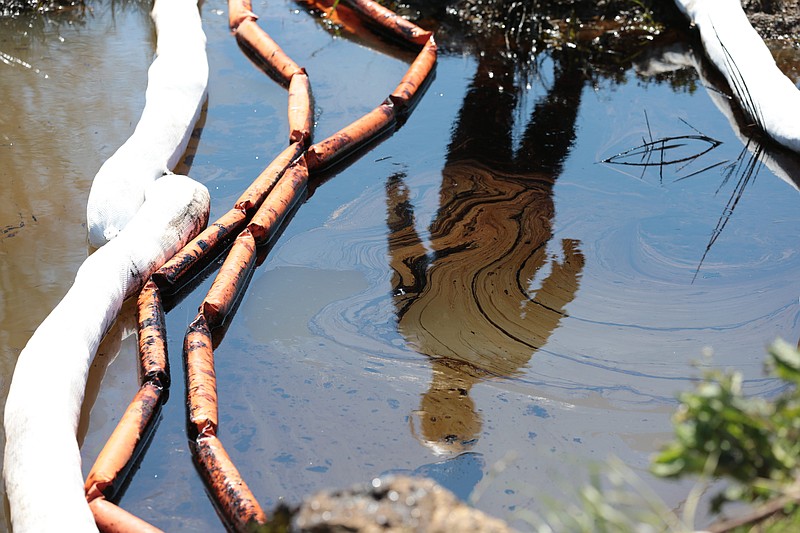LITTLE ROCK -- Arkansas emergency officials' records show that as many as 33 trains carrying Bakken crude oil pass through the state in a given week, each one hauling more than the amount spilled in last year's Pegasus pipeline spill in Mayflower, according to documents obtained by The Associated Press.
The oil trains do not use a Union Pacific rail line through Hoxie, where two freight trains collided head-on Aug. 17, killing two crew members.
In June, the Union Pacific and Burlington Northern Santa Fe railroads reported figures to the Arkansas Department of Emergency Management for distribution to local emergency managers, and had asked state officials not to release the information, saying it contained sensitive and proprietary information. The Associated Press received copies of the railroad's correspondence under provisions of the state's Freedom of Information Act.
Union Pacific expected to have 13-15 Bakken oil trains in eastern Arkansas and 3-5 in the Arkansas River Valley weekly, the letters show. It also temporarily routed 10-12 trains weekly through southern Arkansas to bypass track work in Louisiana. BNSF reported in a letter it had one train using tracks in northeastern Arkansas.
Each train carries at least 1 million gallons of Bakken crude oil, which regulators say may be more flammable than other crude.
Knowing the trains' paths benefits local emergency managers and first responders, who need to know quickly what they're dealing with in an accident, according to Tina Owens, the deputy director of the Arkansas Department of Emergency Management.
Each oil car carries a placard bearing a special identifying number -- 1267 -- that emergency workers can use to find information about how to fight fires or spills and how wide an area an evacuation order must cover.
Jefferson County had the highest volume of trains, which were carrying oil from the Union Pacific's regular routes and its Louisiana detour, according to the letters.
"We're used to it," Jefferson County emergency management coordinator Karen Blevins said. The county is also home to the Pine Bluff Arsenal, where the U.S. made and stored noxious agents for use in war.
The volume of oil being carried on the trains is more than the 210,000 gallons that spilled in March 2013 at Mayflower, prompting an evacuation in the community 20 miles north of Little Rock. A railroad line through Mayflower carries Bakken crude three to five times a week.
A federal Department of Transportation directive, issued May 7, said companies moving more than 1 million gallons weekly had to file a report to each state. It covers rail shipments from the Bakken region of the upper Midwest and Canada, the oil from which has more flammable gases than heavier oils found in Canadian tar sands.
The federal order came after a number of fiery accidents in Alabama, North Dakota, Virginia and Quebec, where 47 people died in 2013 when a runaway oil train exploded in the town of Lac-Megantic. Former National Transportation Safety Board Chairwoman Deborah Hersman had warned that the department risked a "higher body count" as the result of fiery oil train accidents while new federal safety regulations -- expected at the end of this year -- are being prepared.
The Federal Railroad Administration told the AP that states did not have to sign confidentiality agreements to receive the information from the companies and that it didn't qualify as sensitive material.
BNSF's hazardous materials director declined comment. Union Pacific's did not return a call seeking comment. The Kansas City Southern Railway Co., which also has tracks in Arkansas, did not report Bakken oil train shipments.
At Hoxie, responders to the Aug. 17 collision knew almost immediately what each train was hauling. The railroad notifies the state there has been an accident and the state in turn notifies the counties involved.
"The first thing is to find out if there is any leakage," said Buddy Williams, the emergency manager for Lawrence County. "They'll get the manifest and that tells us how far we need to evacuate. They also tell you how far back the really bad stuff is and if a fire crew needs to go back and put foam on to protect it from a fire."
The head-on accident killed two crew members on a southbound train, which had been told to slow and prepare to stop. Williams said a passenger train was seven minutes behind the northbound freight train that was involved in the crash.
State Desk on 08/25/2014